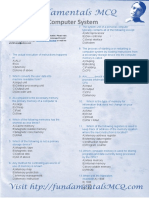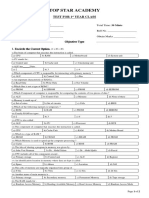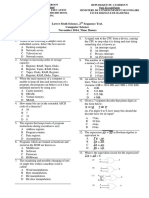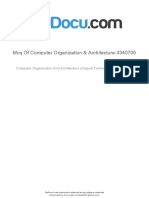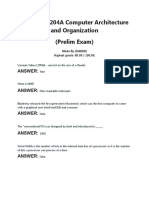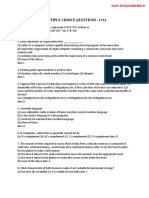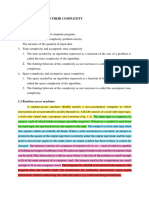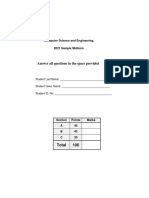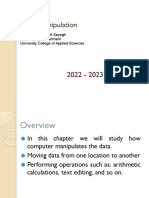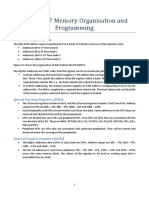100% found this document useful (1 vote)
29 views3 pagesCoa Questions
The document contains sample questions on Computer Organization and Architecture (COA), divided into two parts: True/False questions and Multiple Choice questions. Part I consists of 10 True/False statements related to memory hierarchy, RAM, instruction formats, and addressing modes. Part II includes 19 multiple choice questions covering topics such as cache hits, CPU registers, microoperations, and memory access times.
Uploaded by
2yarednigusse1Copyright
© © All Rights Reserved
We take content rights seriously. If you suspect this is your content, claim it here.
Available Formats
Download as DOCX, PDF, TXT or read online on Scribd
100% found this document useful (1 vote)
29 views3 pagesCoa Questions
The document contains sample questions on Computer Organization and Architecture (COA), divided into two parts: True/False questions and Multiple Choice questions. Part I consists of 10 True/False statements related to memory hierarchy, RAM, instruction formats, and addressing modes. Part II includes 19 multiple choice questions covering topics such as cache hits, CPU registers, microoperations, and memory access times.
Uploaded by
2yarednigusse1Copyright
© © All Rights Reserved
We take content rights seriously. If you suspect this is your content, claim it here.
Available Formats
Download as DOCX, PDF, TXT or read online on Scribd
/ 3










